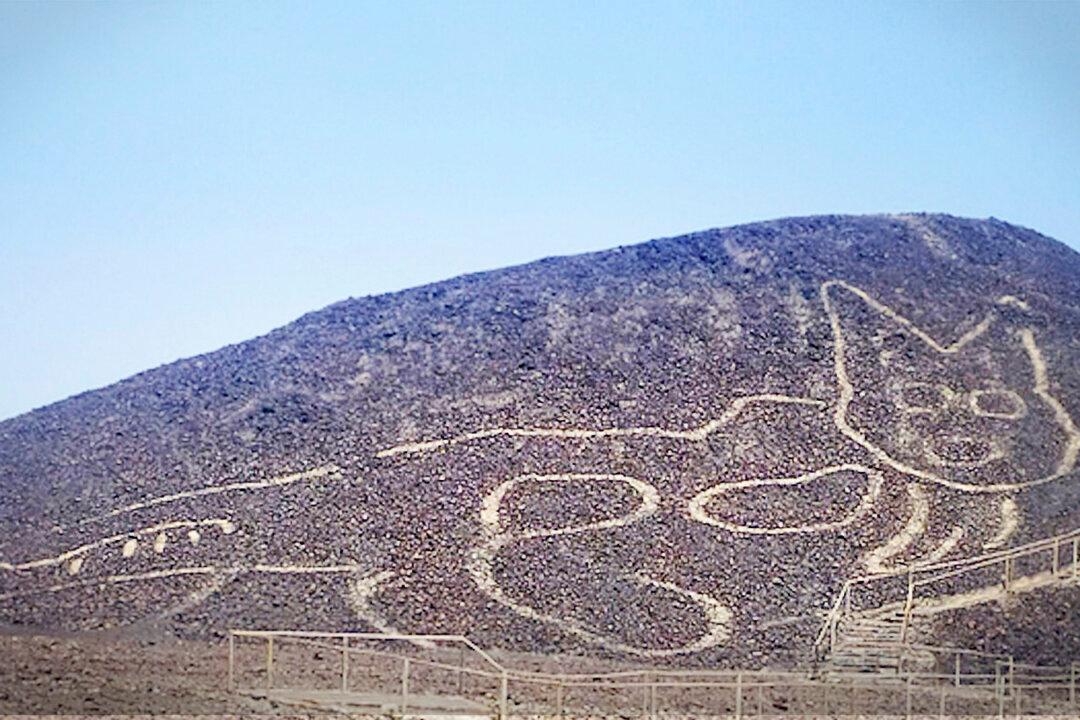The depiction of what appears to be a reclining feline has been discovered carved into the side of a hill in southern Peru’s Nazca Desert. The drawing is thought to be over 2,000 years old.
The cat was discovered while planning for a new path to an observation platform at the Nazca Lines UNESCO World Heritage site, reports the BBC, which would allow visitors to view the site’s numerous ancient geoglyphs (ground drawings).





